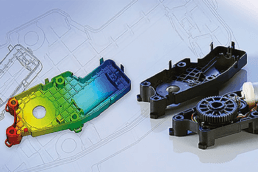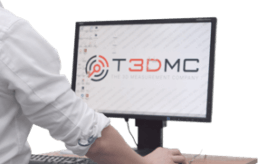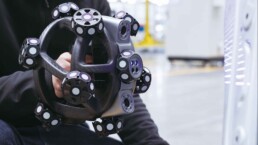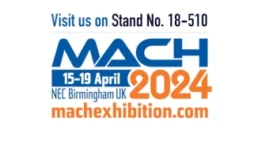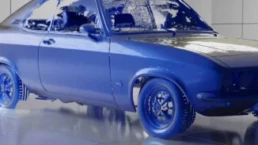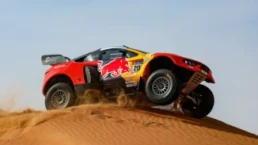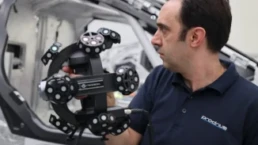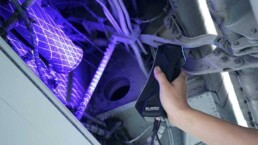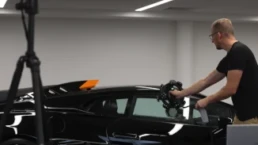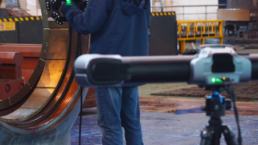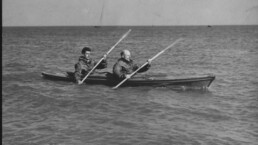
What is Reverse Engineering?
Here at T3DMC we pride ourselves on delivering professional services and high quality results to all our customers and by combining vast industry knowledge, dedicated technology and expertise we excel in the field of Reverse Engineering and CAD modelling. But let’s discuss exactly what Reverse Engineering is and why would you need our CAD modelling services?
In the current digital age, new parts are manufactured from designs developed and produced as a 3D Computer Aided Drawing/Design or CAD model for short. These 3D CAD models are then used to produce tooling, moulds or even as direct input for 3D printing. Crucially, these CAD models are also used in post-manufacturing for quality & inspection and comparison purposes.
2D drawings are still used a lot, but a 3D model will deliver a more complete and comprehensive visualisation of the finished part or assembly. In a lot of cases, particularly with legacy parts, it can be the case that over time 2D drawings have been lost, the part has changed over time to enhance the design or where tooling has been modified but the drawings have not been updated. In other scenarios such as benchmarking or market product analysis, 3D CAD models simply are not made available. This is where reverse engineering using 3D Scanning and CAD modelling comes in.
Parts are 3D scanned to collect precise, accurate and complex full surface geometry. The data captured is then used to surface match and create an intelligent 3D digital representation of the original component.

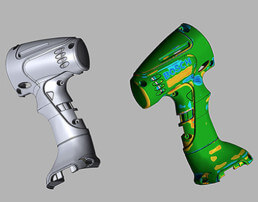
How is this 3D scanning and modelling completed?
We have a variety of the latest technology in handheld portable 3D laser scanning and top of the range automated optical 3D scanning equipment to help capture a highly accurate 3D image of the object. The data is captured in the form of a digital mesh which is then imported into one of our range of dedicated reverse engineering CAD software packages, where our team of experts will use this data to create a CAD model of the original part.
The benefits of an automated 3D scanning system for Reverse Engineering.
When considering such processes as changing supplier, it may be necessary to reverse engineer one of your own products; either because the supplier owns the CAD or because the part has changed over time and you need to check that the original CAD is still accurate and can be used with the new supplier; this is where automated scanning comes in.
Where multiple parts are available, scanning a batch gives a statistical average that we call a Golden Mesh. 3D modelling from this master data set is the most stable method of creating a reverse-engineered 3D data set as it takes into account variation across a manufacturing process.
Using automated scanning over manual scanning for this process is essential as it removes uncertainty from the measurement process, delivering a highly accurate and stable data set to model from.
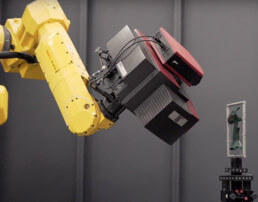
What is the best method for my reverse engineering project?
The team at T3DMC have over 20 years of 3D scanning and modelling experience. We will advise on the most appropriate 3D scanning equipment for the application, which is largely based on the size, material, complexity and critical features of the part to be 3D measured. It’s not quite a “one size fits all in the world” in 3D scanning and each job must be approached differently, but our goal is always to provide a data set of the highest quality to be used for the modelling process.
The output data from 3D scanning is the cornerstone of high-quality CAD modelling. We have a range of equipment that is capable of capturing the best quality 3D data from very small components, such as injection moulded parts, up to very large objects like full-size vehicles, trains, aeroplanes and boats. With this range at our disposal, we are very well equipped to help customers with their projects of all shapes and sizes. Our portable equipment also means that we are able to travel to customer sites to complete measurements onsite where required.
We have a comprehensive range of CAD modelling packages to suit our customer’s needs and we consult with you to select the correct tool to meet the exact output requirements of the project. Whether you need parametric models or simple Parasolid/STP files, we can work with you to produce the file you need.
As manufactured CAD
A reverse engineering process which creates a model which very closely resembles the actual part scanned. This is useful where a part has been modified or has broken meaning an exact replica needs to be created so that it is a perfect fit/replacement. This can be in the form of a fully parametric model, or as a simple NURB surface for packaging projects. You tell us what you need and we will take care of the rest.
Design intent CAD
This is the process of reverse engineering from CAD but taking into account original design decisions in an effort to get the CAD into a condition that more closely resembles the original intended design. Rather than the modified or work altered part that was scanned, here we are able to create fully parametric CAD models with geometric constraints based on design consultation with the customer.
We are able to make experience-driven decisions of what certain geometries should be and where necessary we will deviate away from the scan geometry and manually drive these elements within the model. All done through consultation with the customer.
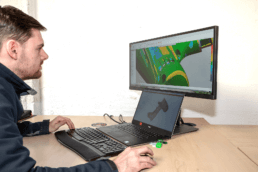
For more information about a Reverse Engineering and CAD modelling project or more details about our services and products, please look around our website or contact the team on 01746 762251 / info@t3dmc.com
Recent news posts
Related news articles
7th February 2024
Revving Up Innovation: T3DMC Becomes Prodrive’s Official 3D Scanning Partner
Explore how our 3D scanning partnership with Prodrive is accelerating advancements in motorsport and driving innovation.
29th August 2023
Preserving History With 3D Scanning Technology: The Mk2 Cockle Canoe, Operation Frankton
Preserving history with SIMSCAN. Capturing 3D data of WW2's unsung hero, Operation Frankton's Mk2 Cockle Canoe.

